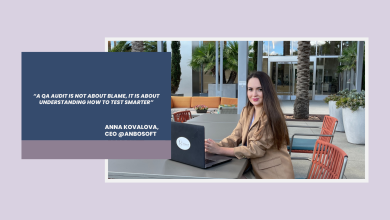
In an era defined by misinformation, trolls hiding behind anonymous user names, and digital fatigue, Internet users are becoming more discerning about where they spend their time online. They continue to choose social networking platforms that entertain and unite them with like-minded people, and in doing so, protection and safety are factors that are becoming increasingly important to them.
Social networking platforms need to have the agility to move with the times to ensure they provide relevant support to their users as the online landscape evolves. Safety is no longer a ‘nice to have’, it’s now a strategic imperative. For modern platforms, user protection can mitigate risk and drive and enable sustainable growth and retention.
When users feel safe, they stay, engage, and advocate for the community. And creating that essential sense of trust requires the combined power of artificial intelligence and human judgment.
Trust drives growth
Trust is the foundation of every successful online community. It fuels loyalty, retention, and engagement and these are the metrics that determine whether a platform merely survives or truly thrives.
Since launching in 2020, WOLF Qanawat has become a vibrant Arabic-speaking community built on creativity, entertainment, community and belonging. It’s a platform where users connect through audio-based chat rooms, share live audio show performances, and build friendships that cross borders. But, behind that success, is a deliberate, and considered, commitment to safety and trust.
Through continuous community feedback and a safety-first design philosophy, the app has achieved remarkable results including a 98% year-on-year satisfaction scores . These aren’t just numbers; they reflect a strategy that has built a community that feels protected and heard.
By listening to users and embedding protection mechanisms into the platform’s DNA, social networking platforms can demonstrate that trust and growth are inseparable. When people know they are in a secure and fair environment, they invest emotionally and that emotional investment translates directly into loyalty and longevity.
Balancing AI and human judgment
Maintaining safety at scale requires agility. It also needs precision and empathy, and this is a combination that no single system can achieve alone.
Forming a partnership between AI-driven moderation tools and a dedicated human moderation team operating 24/7 is the key.
AI and machine learning play a crucial role in detecting potential issues in real time. They can identify patterns of harmful content, flag abusive language, and monitor behavioural trends across thousands of interactions every second. This proactive layer allows the platform to respond swiftly to emerging risks.
Yet, technology alone cannot interpret nuance or context. That’s where human judgment comes in. Adding a moderation team that reviews flagged content to ensure fairness, avoid bias, and maintain a consistent standard of respect is the ideal blend. The result is a system that combines the efficiency of automation with the empathy and reasoning of human oversight.
This hybrid approach ensures that community protection is quick, effective and efficient.
Community-led moderation as a model
One of the most distinctive safety features in our app is our community-led moderation model. Hundreds of dedicated volunteer users play an active role in maintaining harmony across the platform. Supported by clear guidelines, training, and escalation pathways, these volunteers act as the first line of defence against inappropriate behaviour.
When users help uphold the standards of their own community, the results go far beyond compliance. It forms ownership, accountability, and pride and gives members the tools and authority to create the environment they want to be part of. An essential ingredient in building trust and resilience.
To reinforce these efforts, applying device-level restrictions to deter repeat offenders, ensuring that the community remains welcoming and safe for everyone is important.
A shared responsibility between the platform and its users exemplifies what the future of social media safety could look like. It requires three things: inclusivity, transparency and collaboration.
The future of safety
As digital communities continue to grow and evolve, so too must the systems that protect them. The next frontier in social networking safety lies in predictive moderation, enabling the ability to anticipate and intercept harmful behaviour before it escalates.
AI can further enhance early detection, flagging potential risks based on behavioural signals and historical trends. These tools can help moderators act faster and with greater precision, preventing issues before they disrupt the community.
At the same time, the rise of synthetic content and deepfakes introduces new challenges that require both vigilance and innovation. The future of safety will depend on how effectively platforms can balance proactive technology with transparent human oversight, ensuring that AI serves as an enabler and not a substitute for accountability.
User-led tools will also become more important. Empowering individuals to control their own experience, whether through content filters, privacy settings, or reporting mechanisms. This undoubtedly strengthens community resilience and reduces reliance on reactive moderation.
The business case for trust
Safety isn’t just about ethics; it’s about economics. Negative experiences from harassment to misinformation can erode user confidence and increase churn, but worse, it damages a platform’s reputation which can take years, if ever, to repair.
In contrast, a safe and supportive environment creates the conditions for sustained engagement and paves the way for organic brand growth.
In the shifting landscape of social networking, the platforms that thrive will be those that put trust at the heart of their design. That means embracing the best of both worlds: AI that can act instantly, and humans who can act wisely.
Safety doesn’t hinder growth, it’s what makes growth possible. And, when people feel safe, they have trust and when people trust a platform, they spend more time there. They invite others. They contribute more freely. And they become advocates, not just users. And that can only return good things.



